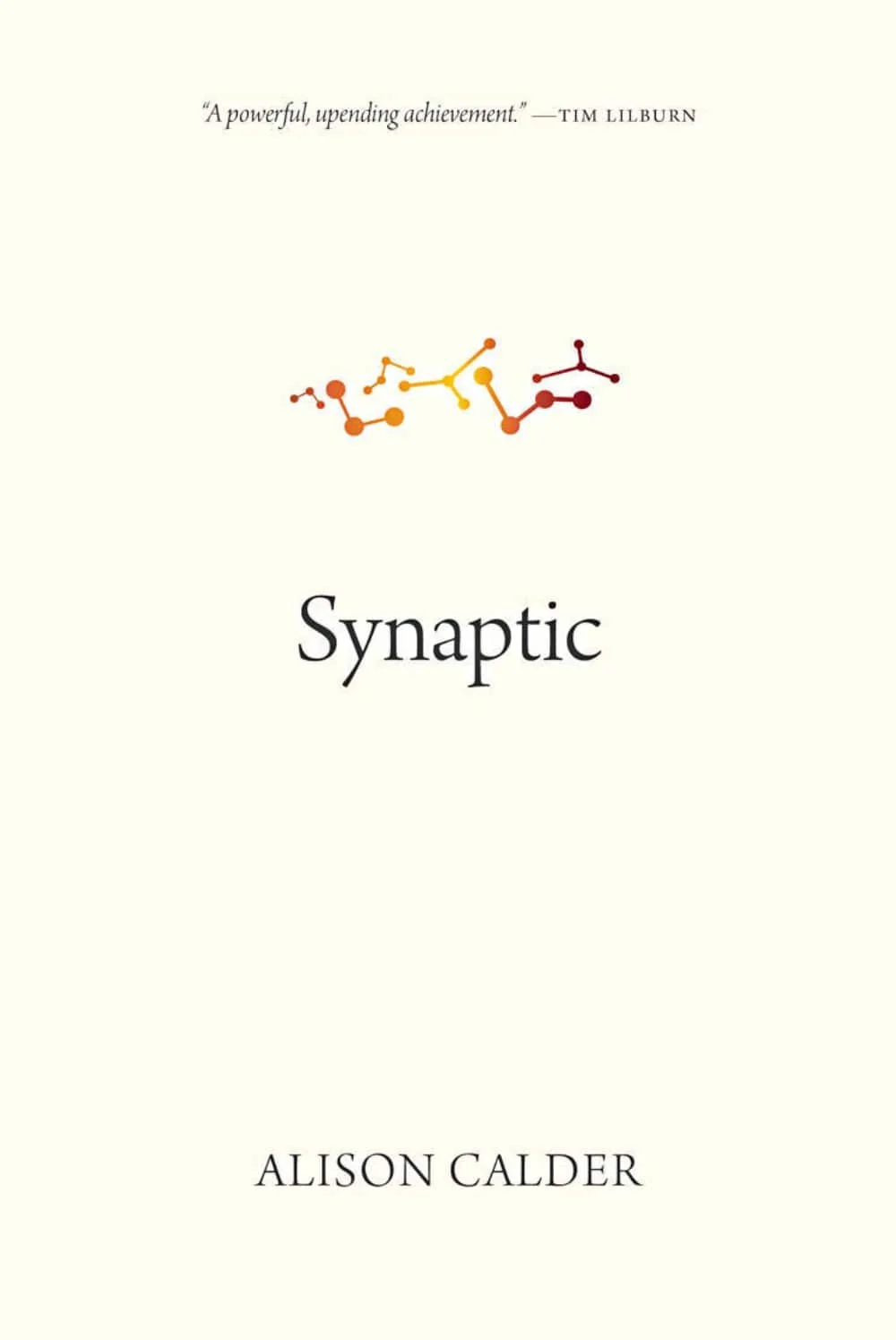Book: Synaptic
by Alison Calder
Published by University of Regina Press
Review by Elena Bentley
$19.95 ISBN 9780889778610
“[L]et me reverse your gaze, turn / the microscope upon the viewer.” It’s clear from the beginning of Alison Calder’s incredible third book of poetry, Synaptic, we are being asked “to think about the way we perceive and the ways in which we seek to know ourselves and others.” To find answers, Calder starts by exploring the field of neuroscience.
“Connectomics,” the book’s first section, concerns itself primarily with the neuroscientific ways humans attempt to know themselves, or more importantly, the lengths to which humans will go to know themselves. Footnotes accompany each poem in this section, and the language is quite simple. Both the footnotes and straightforward diction allow the poems to be easily understood, despite the subject matter’s complexity.
Aware of the large role animals play in our curiosity to glean self-awareness, Calder has written poems inspired by, among other things, the gene splicing of fireflies and mice, the genome sequencing of roundworms, and the discovering of algal protein for the use of optogenetics; however, she notes the curiosity is not reciprocal. An owl, for example, “knows itself / […] It sees you and doesn’t care.” In the poem “C. ELEGANS,” the nematode speaker insinuates it knows who the real parasite is: “Non-hazardous, non-infectious, non-pathogenic, / non-parasitic, / of no economic importance, I’m nothing / that you are.”
Although we have the ability to gather information from animal experiments, from mapping the brain and modelling it in flat 2D layers, and from artificial intelligence and computer software that can organize, summarize, and translate the data for us, Calder’s collection shows neuro- and computer science alone won’t tell us who we are.
As the second section, “Other Fires,” shifts from scientific methods of knowing towards the personal, the footnotes disappear from the page (though the simple language continues); instead, trolls, selkies, foundlings, bears, and lobsters find their way into these poems. But whether we turn to myth and mystical creatures, our own personal histories, or science, Calder is aware we are running out of time to know ourselves: “Ice melts, and […] [t]he glacier’s tongue retreats” under “a sun that’s slowly growing.”
There’s a mature, retrospective quality to the poems in section two, almost as if Calder is trying to make sense of a life mostly lived. The final poem, “At El Santuario de Chimayó,” suggests faith can also show us who we are. When the impending death of a brother compels the often cynical speaker to fill a jar with “magic healing dirt,” even though the speaker knows it has no real power, it is obvious in this desperate act of faith that we come to know ourselves better in the places we least expect.
While we might not know all there is to know about ourselves, or how we’ve sought to know it, of one thing we can know for sure after reading Synaptic: though we float randomly through life without “knowing where we’ll land,” in the end, we are all “heading for the same place.”
THIS BOOK IS AVAILABLE AT YOUR LOCAL BOOKSTORE OR FROM WWW.SKBOOKS.COM

